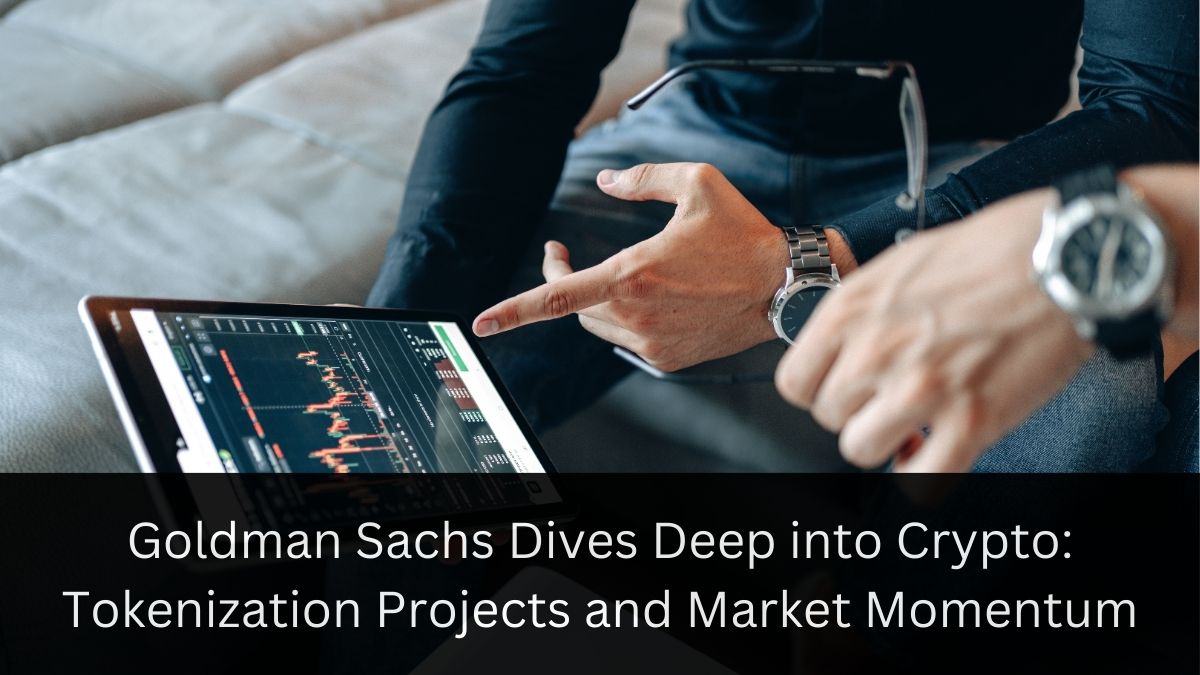Crypto
Goldman Sachs Dives Deep into Crypto: Tokenization Projects and Market Momentum

In the ever-evolving landscape of finance, traditional powerhouses are increasingly embracing the world of cryptocurrencies and blockchain technology. Goldman Sachs, a titan of Wall Street, is making waves with its ambitious plans in the crypto space, particularly in the realm of tokenization. This move signals a significant shift in the financial industry’s approach to digital assets and could herald a new era of innovation and accessibility in investment markets.
The Rise of Tokenization: Goldman’s Bold Move
Tokenization, the process of representing real-world assets on blockchain networks, is quickly becoming a hot topic in financial circles. Goldman Sachs, under the leadership of its digital assets chief, is positioning itself at the forefront of this trend. The bank has announced plans to launch three tokenization projects by the end of the year, including its first in the United States.
These initiatives aren’t mere experiments. They represent a calculated strategy to reshape how investors interact with various asset classes. By tokenizing assets such as money market funds and real estate holdings, Goldman aims to increase liquidity, reduce transaction costs, and open up new investment opportunities for its clients.
A Client-Centric Approach
One of the keys to Goldman’s strategy is its focus on creating products that investors actually want. To this end, the bank recently held a digital assets summit in London, attracting over 500 clients. This event served as a valuable platform for gathering feedback and gauging interest in tokenized assets.
As one Goldman executive put it, “There’s no point doing it just for the sake of it.” This client-centric approach demonstrates Goldman’s commitment to developing practical, valuable solutions rather than chasing trends blindly.
The Broader Crypto Landscape
Goldman’s push into tokenization comes amid a resurgence in the broader cryptocurrency market. After weathering a harsh crypto winter triggered by the collapse of FTX, the sector has seen a remarkable comeback in 2024. The launch of Bitcoin ETFs in January played a significant role in this revival, with Goldman Sachs taking on a key role as an authorized participant in several ETF offerings.
This renewed momentum in crypto has not gone unnoticed within Goldman. The bank has been expanding its crypto-related services, including trading cash-settled crypto derivatives on behalf of clients and involvement in ETF markets. According to insiders, there’s been a noticeable uptick in client interest and a broadening of the product suite they’re seeking.
Divergent Views Within the Bank
Interestingly, Goldman’s embrace of crypto isn’t unanimous across the institution. Some high-ranking officials, such as the chief investment officer for Goldman Sachs Wealth Management, have expressed skepticism about cryptocurrencies as an investment asset class. This internal diversity of opinion reflects the complex and evolving nature of the crypto landscape.
However, the bank’s digital assets chief sees this diversity as a strength, noting that an institution of Goldman’s size naturally accommodates differing views. This balanced approach allows the bank to explore innovative opportunities while maintaining a measured perspective on the risks and challenges involved.
Tokenization: The Next Frontier
Goldman’s tokenization projects represent a significant leap forward in the bank’s crypto strategy. While the specifics of these projects remain under wraps, we know that one focuses on the fund complex in the U.S., while another targets debt issuance in Europe.
Unlike some competitors who are exploring tokenization on public blockchains, Goldman is opting to work exclusively with private blockchains due to regulatory considerations. The bank’s goal is to create robust marketplaces for tokenized assets, improving transaction speed and expanding the types of assets that can be used as collateral.
The Competitive Landscape
Goldman isn’t alone in its tokenization efforts. Industry giants like BlackRock and Franklin Templeton are also testing the waters. BlackRock’s treasury fund BUIDL, which operates on the Ethereum blockchain, has already reached $500 million in assets. However, Goldman distinguishes itself by focusing more on institutional clients rather than retail investors.
Looking Ahead: Regulatory Changes and New Opportunities
As the U.S. presidential election looms, there’s potential for significant shifts in the regulatory landscape surrounding cryptocurrencies and digital assets. Goldman’s digital assets chief hinted at the possibility of expanding the bank’s crypto offerings, including potentially holding spot crypto assets and providing execution and sub-custody services, subject to regulatory approval.
This forward-looking stance underscores Goldman’s commitment to staying at the cutting edge of financial innovation. By positioning itself as a leader in tokenization and maintaining a flexible approach to crypto services, the bank is well-positioned to capitalize on future opportunities in the digital asset space.
Goldman Sachs’ foray into tokenization and its broader embrace of crypto technologies mark a significant milestone in the evolution of traditional finance. As one of the world’s most influential financial institutions, Goldman’s moves are likely to inspire confidence and potentially accelerate adoption across the industry.
The coming months and years will be crucial in determining the success of these initiatives. Will tokenization live up to its promise of democratizing access to diverse asset classes? Can it deliver the efficiency and liquidity improvements that proponents claim? Only time will tell.
One thing is certain: the financial landscape is changing rapidly, and institutions that can successfully navigate the intersection of traditional finance and digital innovation will be well-positioned to thrive in the years to come. As investors and market watchers, we would do well to keep a close eye on these developments. The future of finance may be unfolding before our eyes, with tokenization playing a starring role.
